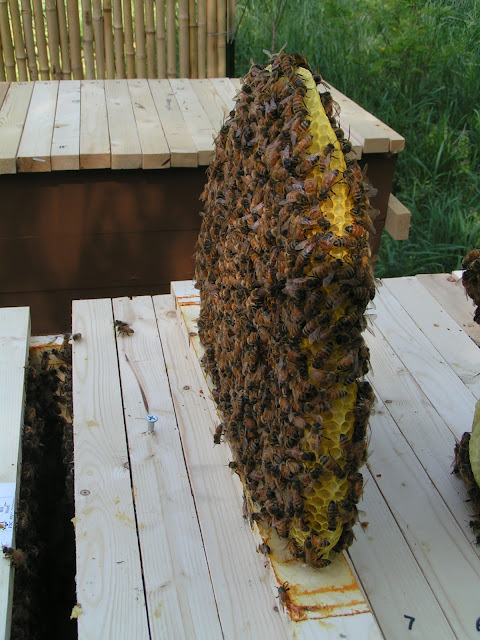I checked the hive this afternoon to see if the two hives had integrated yet. Some of the bees from the queenless hive may have transferred to the larger hive, but many had not started integrating yet and the queenless hive had actually created queen cells from the brood comb I had transferred to them over a week ago. The queen cells were pretty far along and one was even capped. This means a new queen would be emerging soon and if she did, and the two hives had integrated, the new queen and current would fight to the death. I'm pretty happy with the current queen, so that leaves me with two options I can think of. One option would be to remove all the queen cells I could find on the queenless hive's comb and the other option would be to try to transfer the queenless hive back to its old location. Either option had its downsides, but I didn't feel like killing the new queens and decided to go with the latter option. Who know how this will work out.
On a more positive note, the hive that already has a queen seems to be doing great and has grown in size dramatically. The bees are making a mad rush for pollen and nectar and they've produced a lot of comb and brood. Below are pictures of one of the combs I examined.

For a while now I've been interested in inserting electronic sensors into my bee hives to collect various types of data. Last night I finally got around to ordering several humidity and temperature sensors from Mouser. I also ordered the necessary parts to connect my AVR Dragon to the micro-controllers I want to program. I envision having the temperature and humidity sensors equally distributed in one of the hives and controlled by one atmega which would consolidated the data into a single data-stream and feed it to a Raspberry Pi I purchased a while ago. The Raspberry Pi would then store the data which could be remotely accessed via a wifi connection.
Finally, the kittens have finally received a clean bill of health from the veterinarian and have gotten all of their vaccinations, so we've introduced them to the rest of the house and Joey Jo-Jo. We made the introduction gradually with brief controlled interactions between Joey and the kittens over the period of a week, but yesterday we let the kittens out of there room for good and they've moved their base-of-operations to our bed.


















